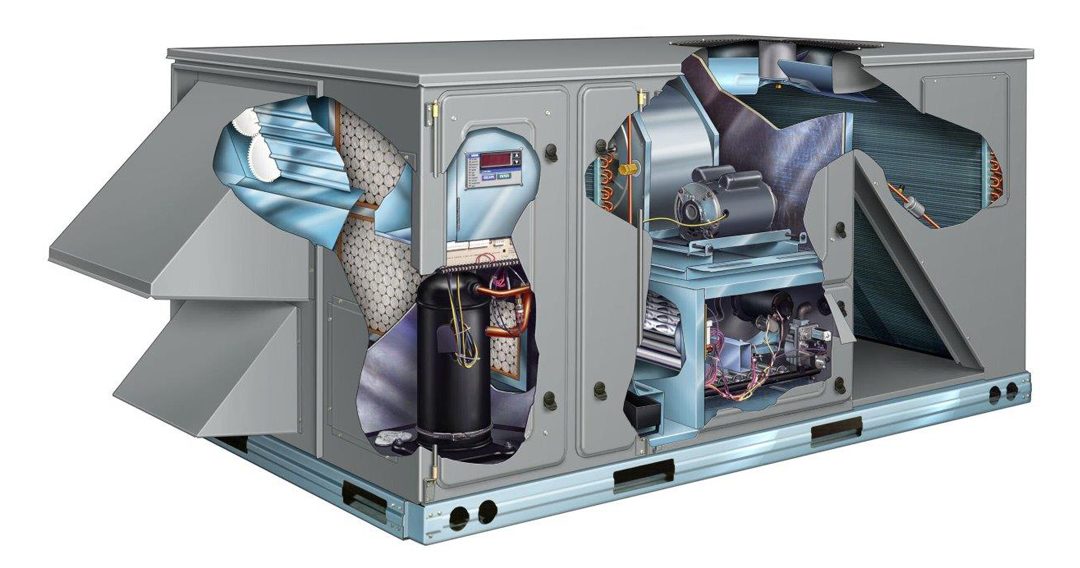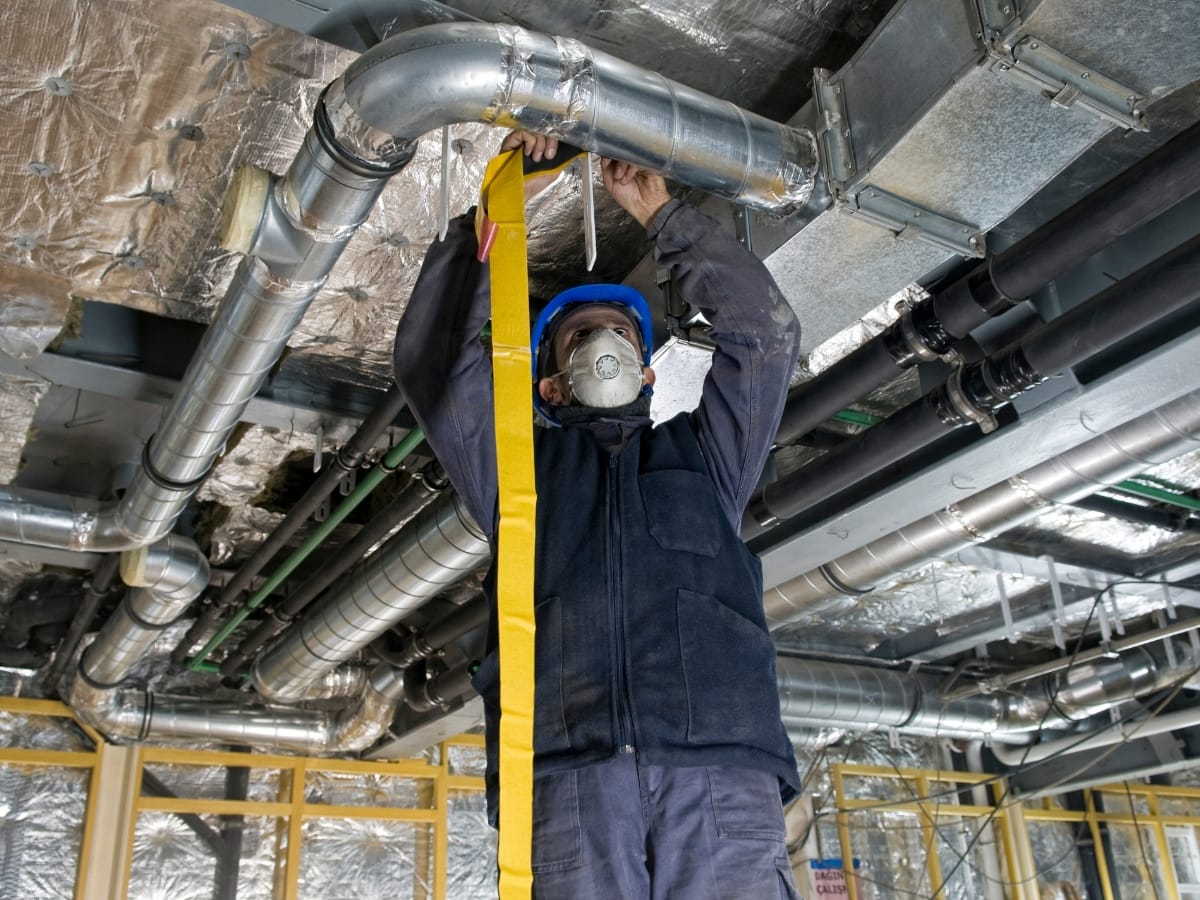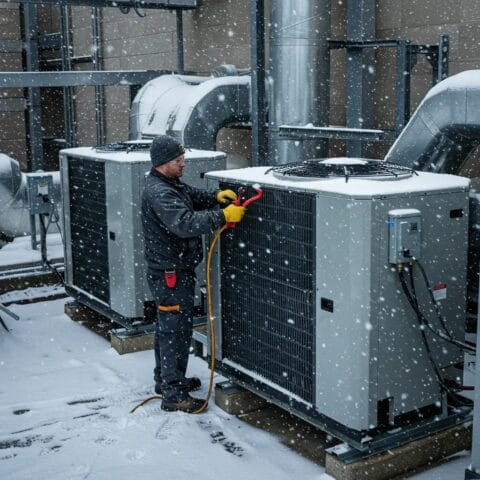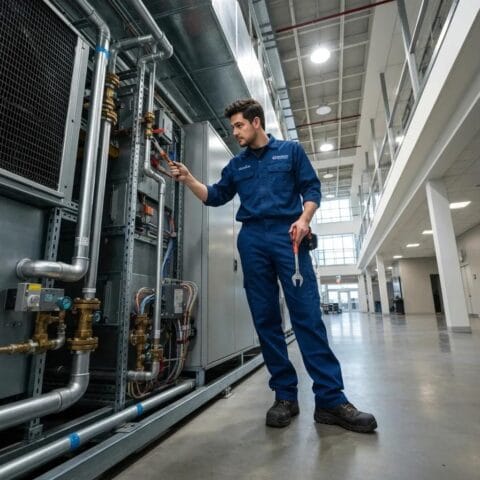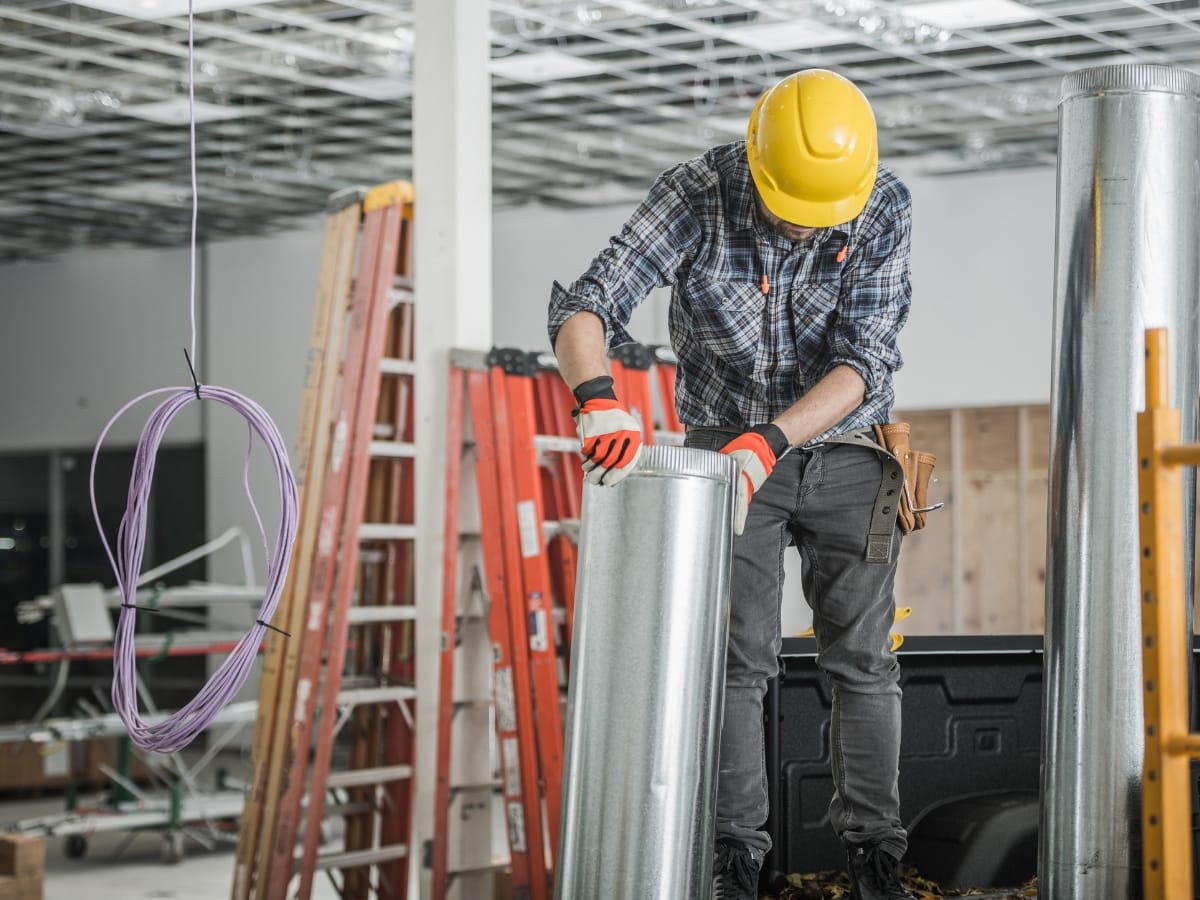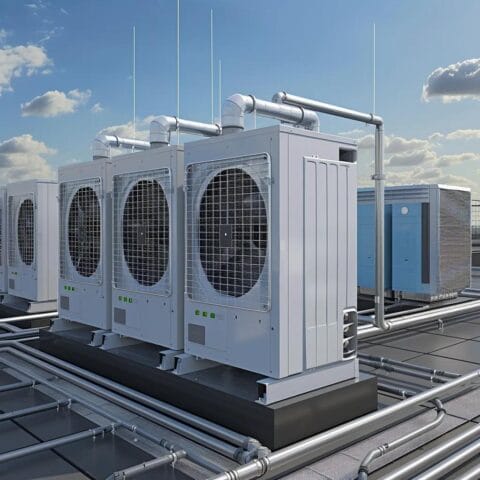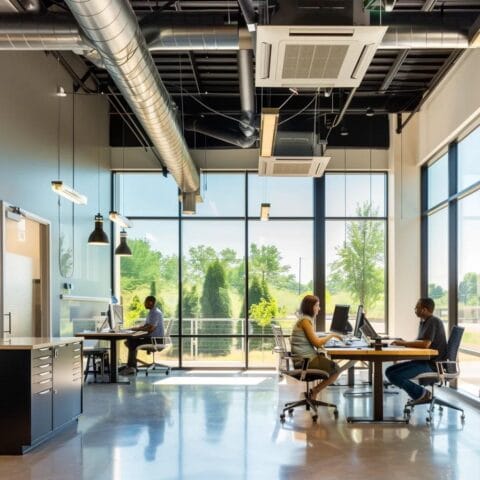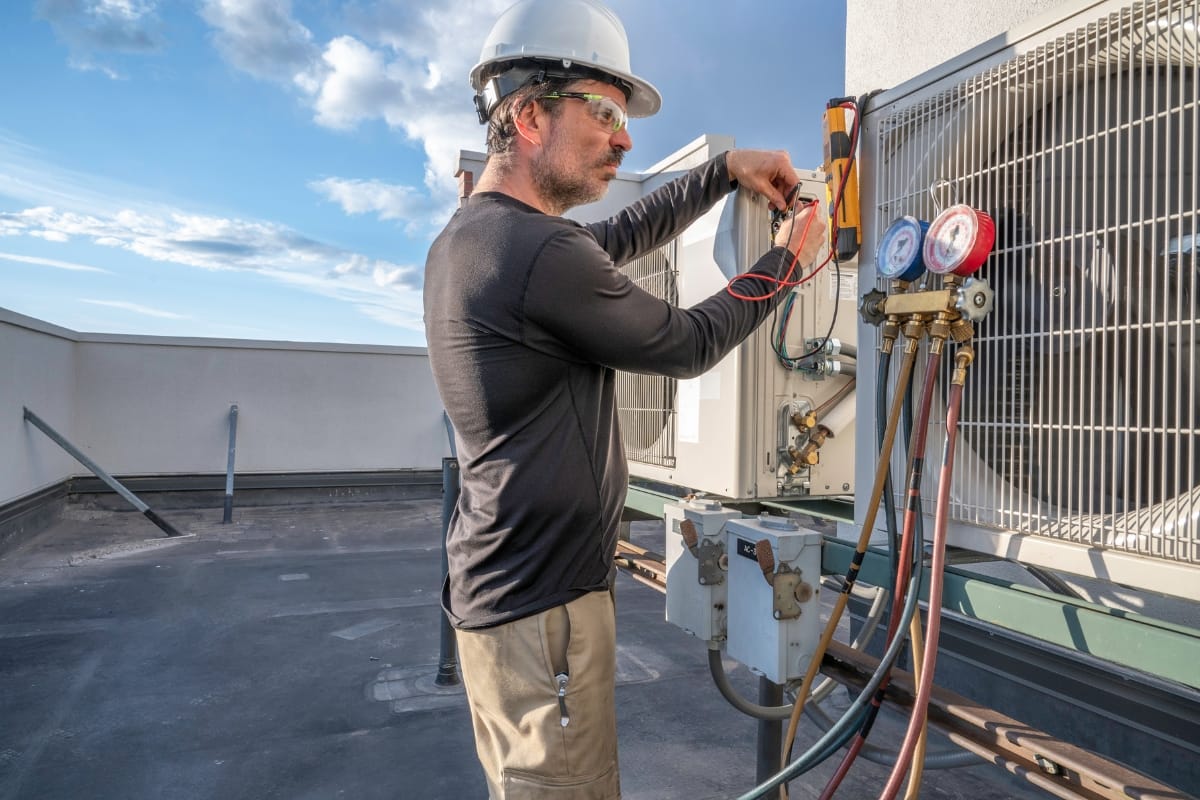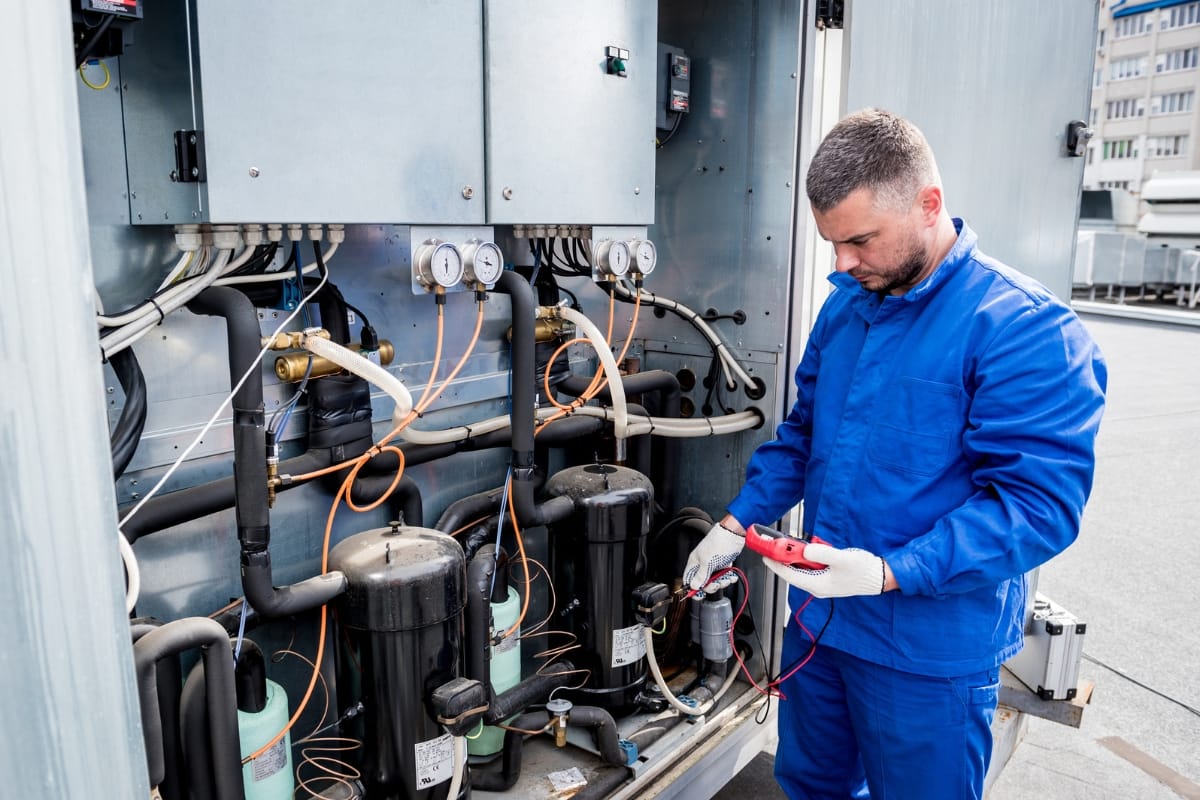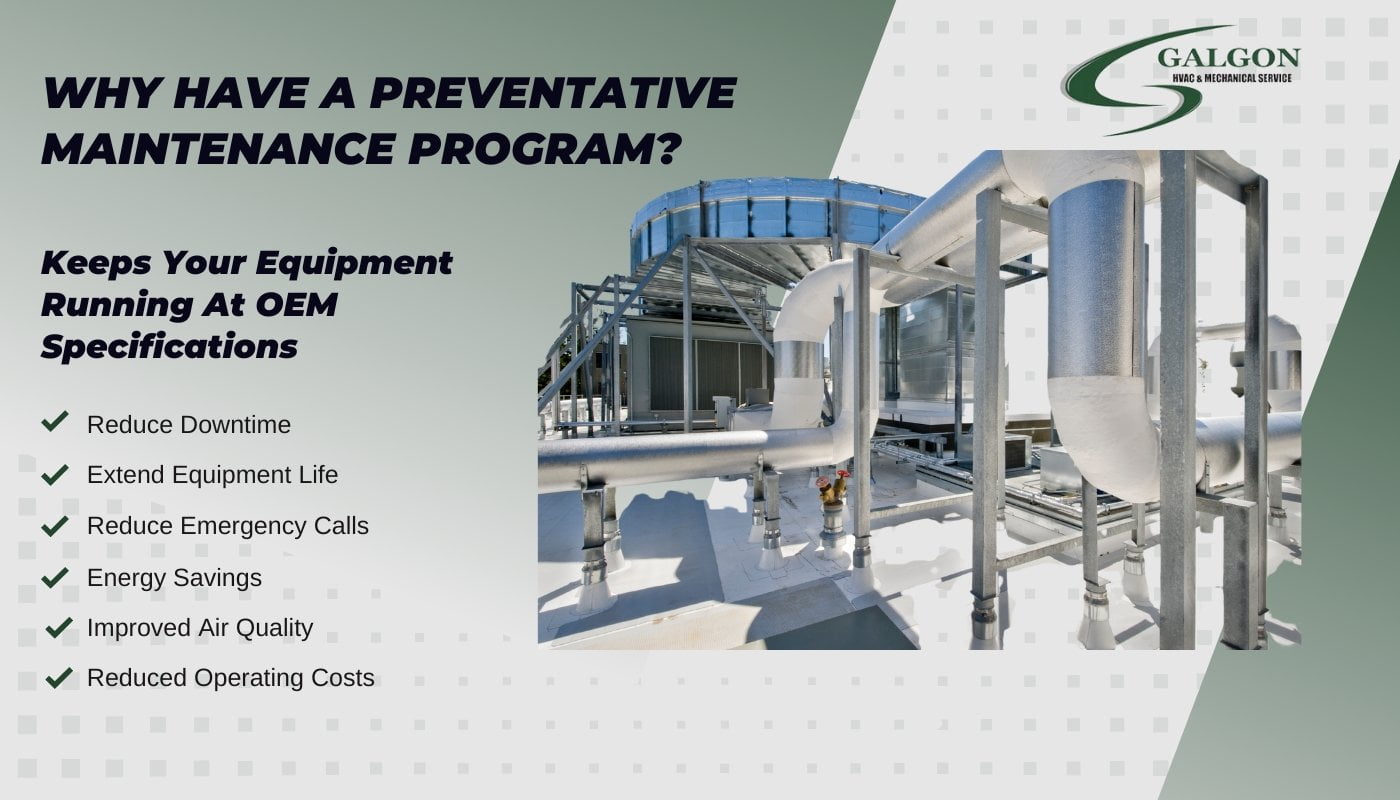When it comes to the comfort of your customers and employees, you can’t afford to compromise. A rooftop unit HVAC system is the perfect solution for keeping your business comfortable all year round.
What is an RTU HVAC System?
The RTU is the one of the most widely used commercial heating and the cooling units The (RTU) rooftop unit is sometimes called a package unit, as all its components are contained in one unit. The components of a RTU are:
- Evaporator section and coil
- Condenser section and coil
- Compressor
- Blower motor and fan
- Intake for outside air
- Economized (if applicable)
- Heat source (gas, water, or electric heat)
- TXV
- Liquid Line Drier
- Exhaust flue
The RTU is usually a direct-expansion (DX) unitary system, which means that the air is cooled by a refrigerant, and can be either fan-cooled or water-cooled. Heat can be produced by gas, electric, or water. How an RTU works is first, air returns back to the packaged rooftop unit from the space the unit is ventilating. Some units also mix outdoor air with the returning air to produce fresher air for the space. The air then moves through the filters. Then it continues to the evaporator coil which chills air by running it over refrigerant in the coil. The air then flows through a blower, leaving it conditioned and ready for the space. Some units have small heating elements near the blower to further adjust the air’s humidity. There is usually a clear, insulated divide between the evaporator coils that cool the return air, and the condenser coils and compressor that eject heat to the atmosphere. A basic thermostat typically controls packaged rooftop units. However, depending on the application they can be a part of a more complex control system.
There are also some specialized applications for packaged rooftop units. For example, some units condition 100 percent outdoor air. So all the air running through the unit comes from outside, and the unit uses no return air. These units are known as 100 percent dedicated outdoor air units, or makeup air units. They require increased insulation, additional parts, and potentially more energy to run. Their obvious advantage is that they circulate fresher air than normal packaged rooftop units.
The advantage of these units are they are easier to maintenance and troubleshoot since all the components will be in one spot. There are also no refrigerant line sets being ran, this helps with the installation cost of RTU’s for your building. If you have commercial HVAC controls for your building it will also save on cost of doing just (1) RTU controller, whereas if you have a split system you would need a controller for both the condenser and the AHU. The maintenance involved in a RTU typically are:
- Changing the filters
- Cleaning condenser coil
- Tightening electrical connections
- Checking temperature difference across the evaporator coil
- Checking refrigerant levels
- Changing belt (if applicable)
- Checking amp draw of compressors
The only thing that can be a disadvantage of installing a commercial HVAC RTU system is whether or not your roof can support an RTU. It is always good practice to get the approval of a structural engineer to ensure your roof is safe and can hold the weight of an RTU. Another thing to think about is you need enough room below the roof and above your ceiling to run duct work to the spaces that need conditioned air. If your ceilings are congested and have sprinkler lines, lighting, fire alarms, other duct work, etc. This will be very hard to install the duct work to accompany a new RTU.
You can see exactly how an RTU system works from the picture below.
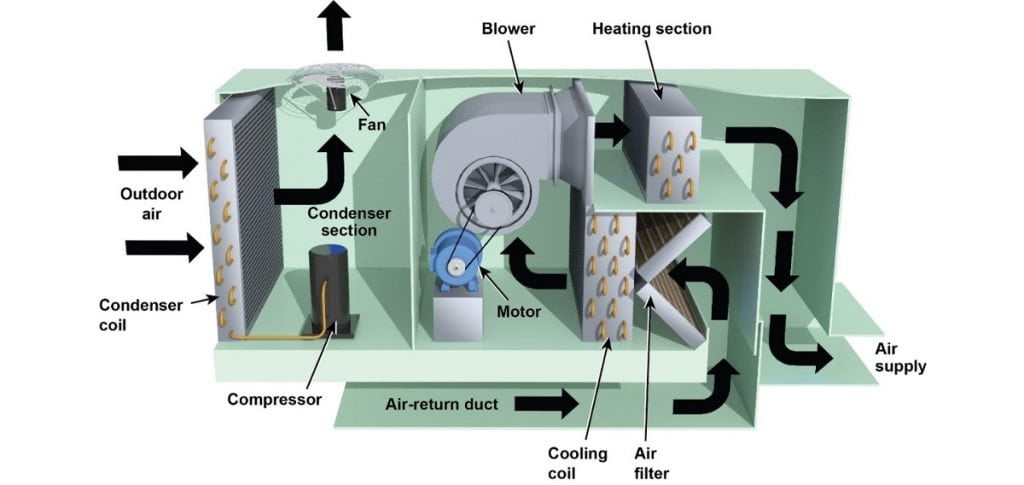
An RTU or rooftop unit is a self-contained heating and cooling unit that is typically mounted on the roof of a building. They are often used in commercial and industrial facilities to provide air conditioning and heating to large portions of a facility.

